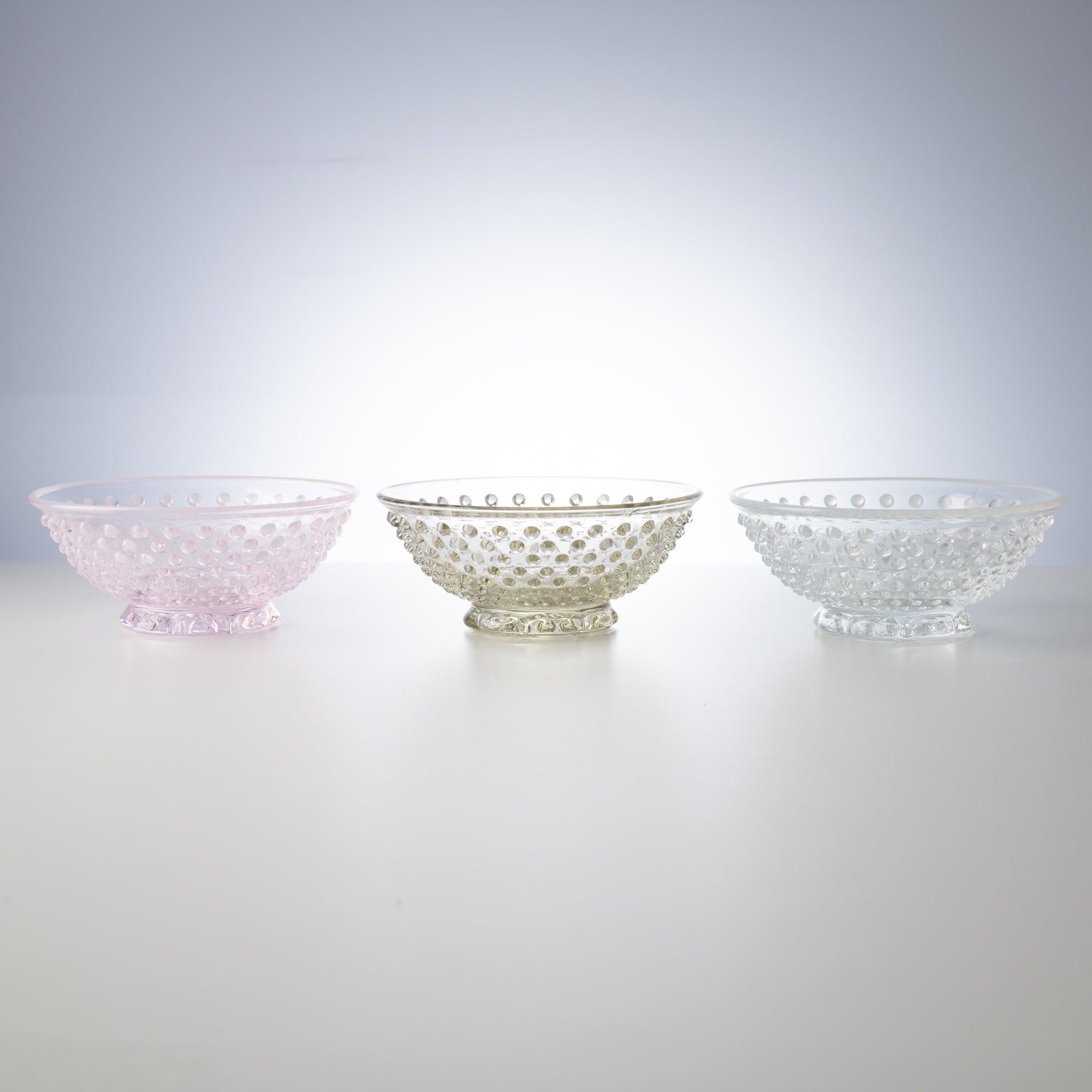
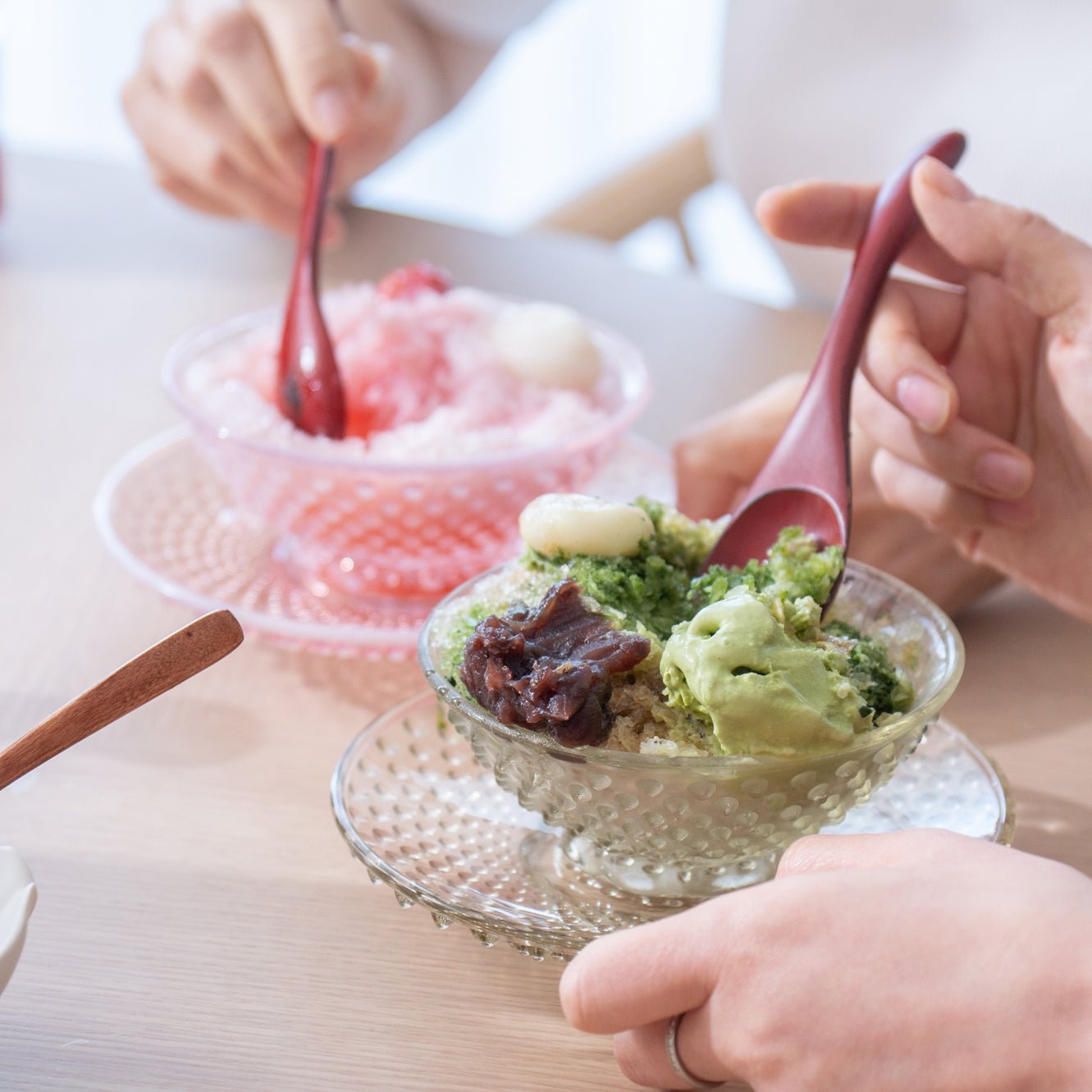
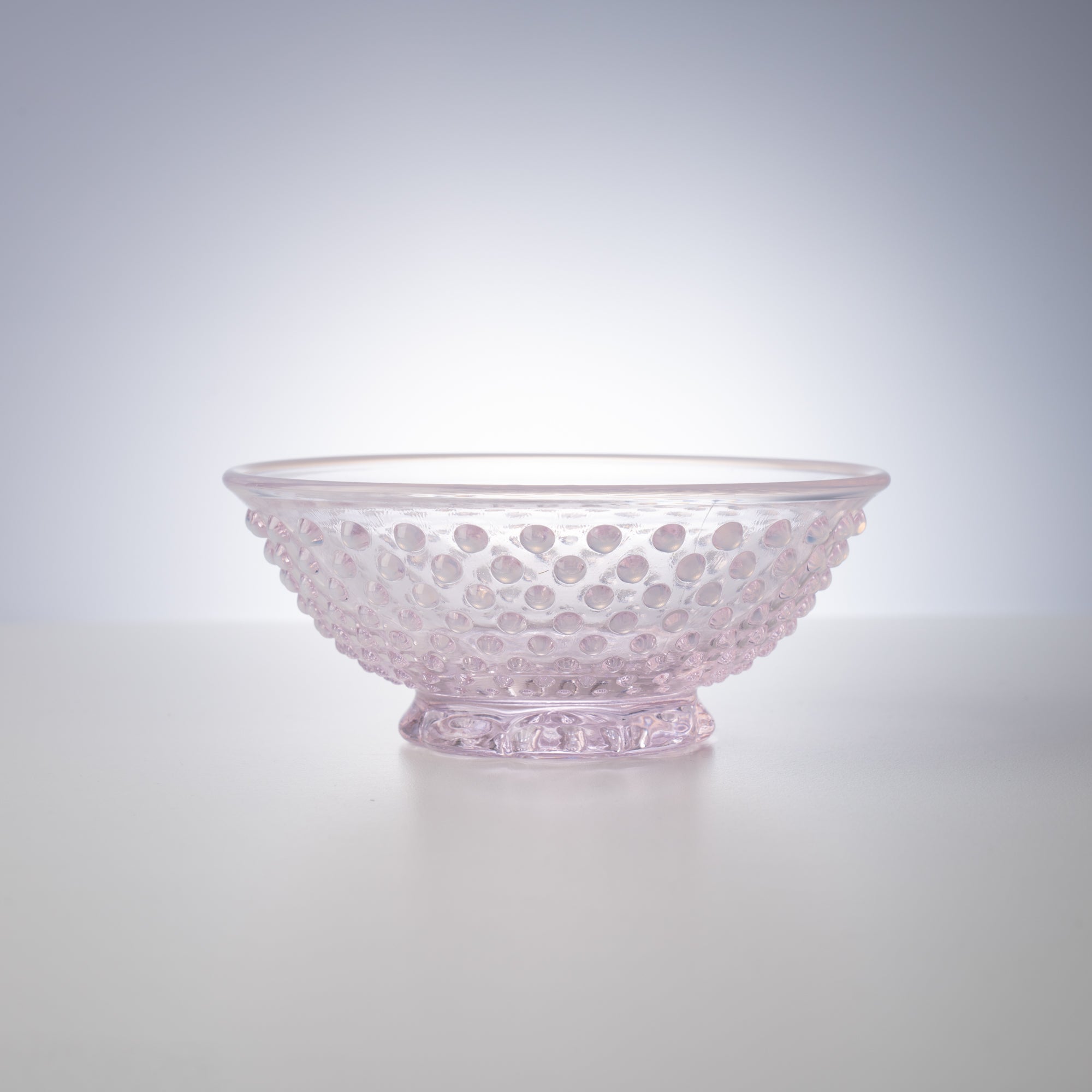
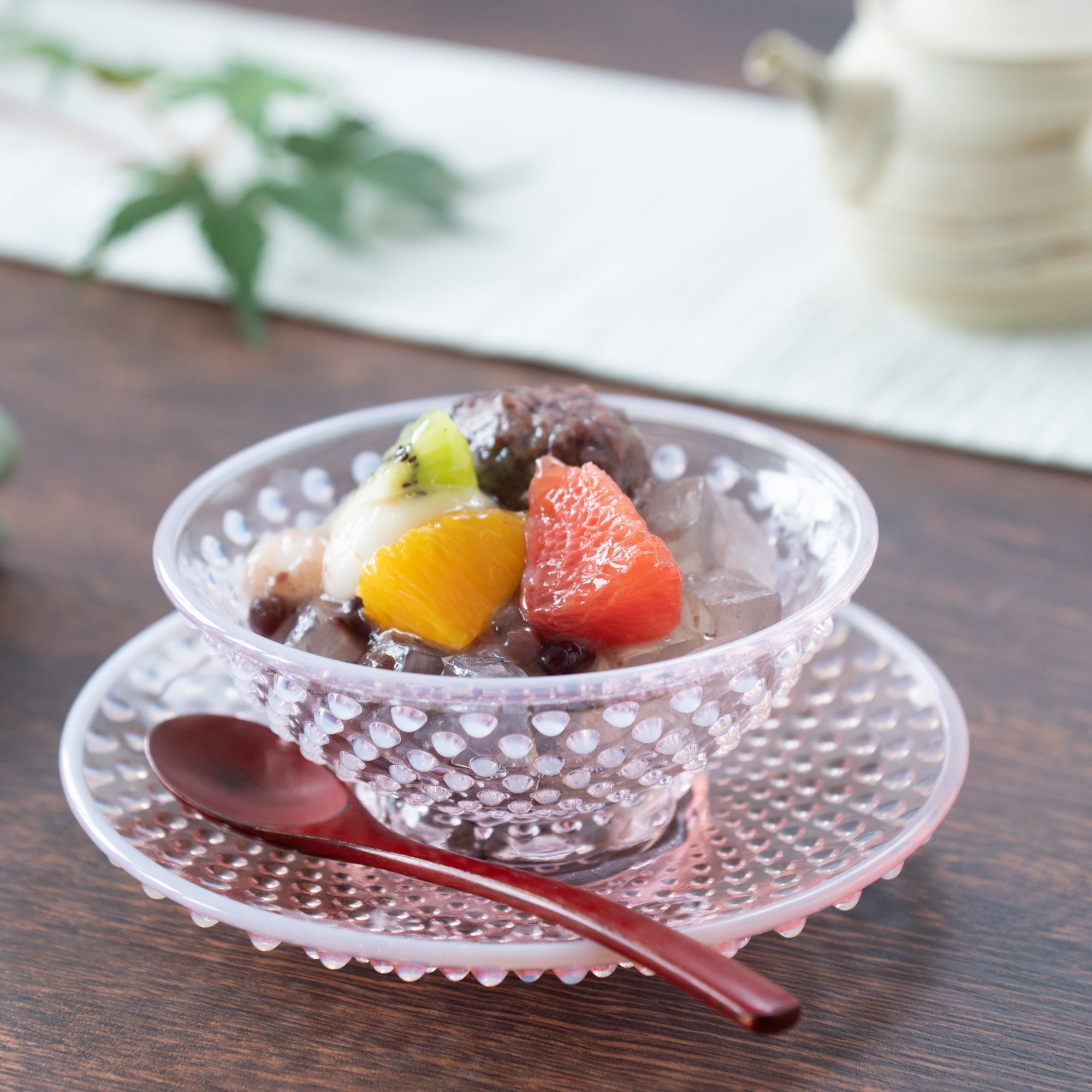
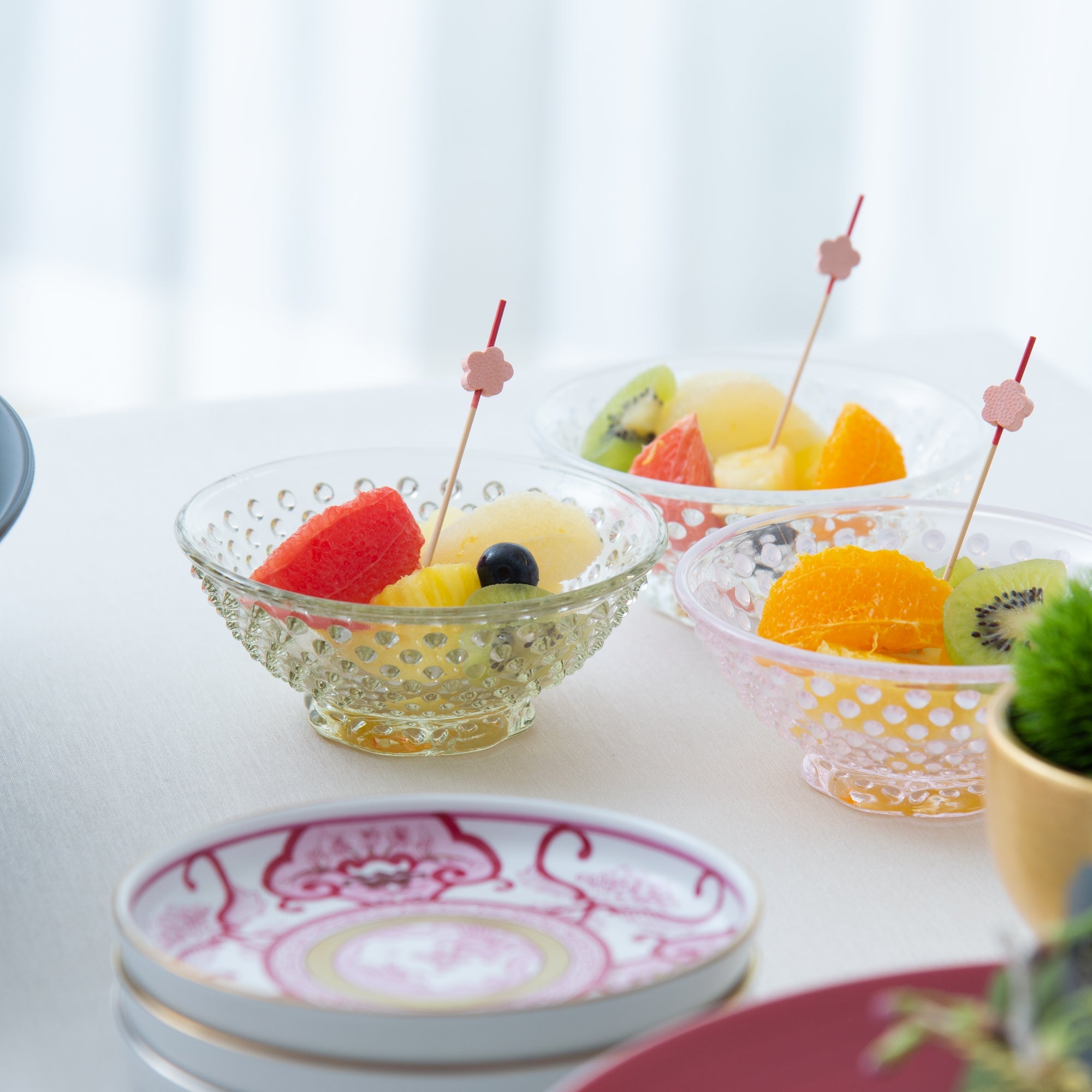
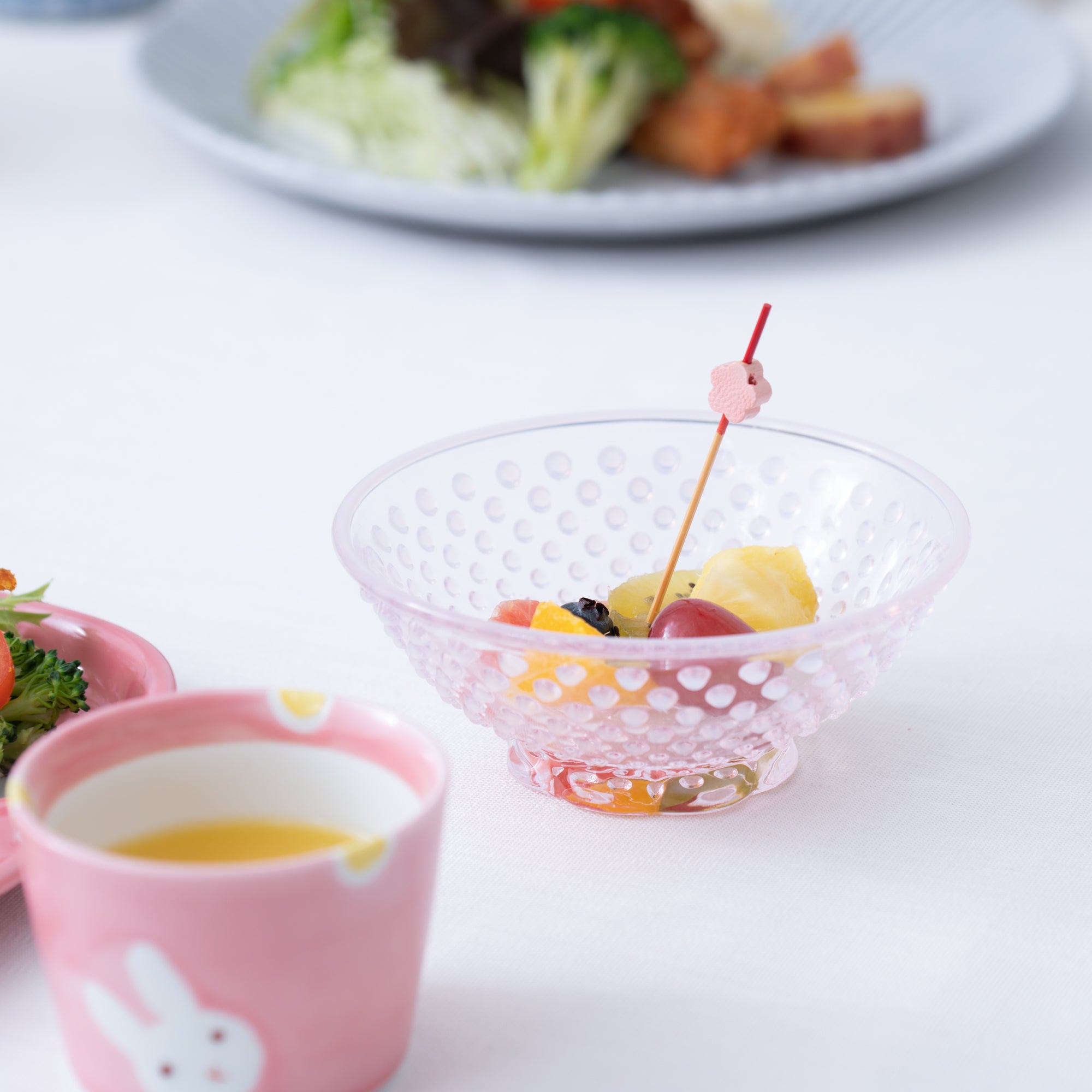
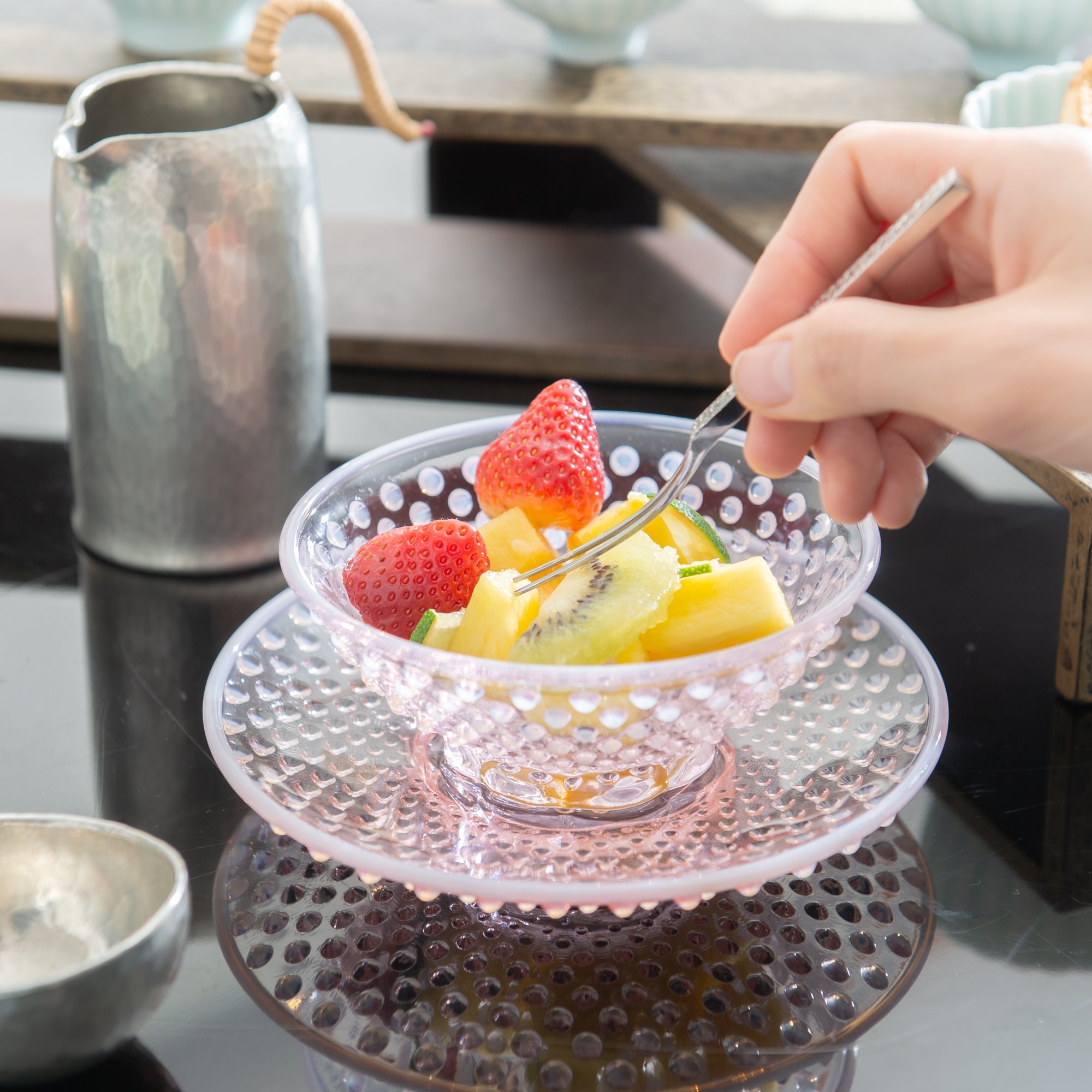

































Arare Pattern Edo Glass Kobachi Bowl
Estimated Shipping Widget will be displayed here!
This Kobachi bowl features a design reminiscent of plum blossoms in the center of a shimmering bumpy dot pattern, called "Arare".
This size is ideal for serving side dishes such as salads and "Sunomono" vinegared dishes, desserts such as Anmitsu and shaved ice, and fruits. It is recommended especially for serving cold food, as the cool atmosphere of the glass enhances the food.
This piece is recommended as a gift or for home use.
The "Arare" pattern refers to the design used in cast iron kettle etc, in which large and small dots are lined up in rows. It is a simple and beautiful pattern of dots lined up in rows, and has long been loved in Japan.
However, expressing this pattern in glass required a high level of technical skill. During the mid-Edo period (1603-1867), pressed glass with patterns of bumpy dot was imported from overseas to Japan, but it was produced with a great deal of industrial technique and craftsmanship.
As Japanese glass technology improved with the times, the bumpy dot pattern was arranged with a Japanese flavor, and Japanese pressed glass, more clearly engraved than blown glass, became more durable and was produced in greater quantities due to high demand.
Hirota Glass is one of the oldest glass makers in Tokyo, founded in 1899. Based on the data of designs handed down to the company since its foundation, Hirota Glass has continued to produce a series of products that harmonize with contemporary home décor, while inheriting the traditional techniques of Japanese glassblowing and Edo Kiriko.
PRODUCT DETAIL
- Quantity: 1
- Dimension: D12.5cm(4.9in)×H5cm(2in)
- Origin: Made in Japan
- Brand: Hirota Glass
![]()
DETAIL
| Quantity | 1 |
| Size | D 12.5cm(4.9in) × H 5cm(2in) |
| Material | Glass |
| Microwave | No |
| Dishwasher | Yes |
Maker / Brand
When Hirota Glass was founded, Japan was in the Meiji Era (1868 CE–1912 CE), a time marked by the Industrial Revolution and increasing Westernization of the townscapes.
During this era, Japanese and Western arts, crafts, architecture, and designs began to blend. By the Taisho Era (1912 CE–1926 CE), this fusion gave rise to "Taisho Romanticism," a unique aesthetic style of the time.
In 2002, Hirota Tatsuo, the third director of Hirota Glass, began reviving the classic glassware styles popular during the Taisho Era. Today, the exotic charm of Taisho Romanticism continues to be reflected in Hirota Glass's creations.
Origin
Tokyo, the capital of Japan, is also a center of craftsmanship. Among them, Edo Glass and Edo Kiriko are traditional Japanese Glassware that have been handed down for about 200 years in Edo City, the old name for the central area of Tokyo.
These beautifully shining glasswares have been refined in Japan's largest consumer city, carrying on the good old Japanese tradition into the modern age.
Choose options








































Estimated Shipping Widget will be displayed here!
Kobachi Small Bowls
Kobachi, literally “small bowls” in Japanese, are designed for serving appetizers and side dishes. Deeper than a small plate but smaller than a main course or ramen bowl, kobachi are just the right size for light stews and simmered vegetables. Incorporating one or several kobachi bowls into a table setting and arranging dishes of different sizes and colors lends your meal an authentic Japanese atmosphere.
This category includes bowls with diameters under 12.9 cm (5.1 in).
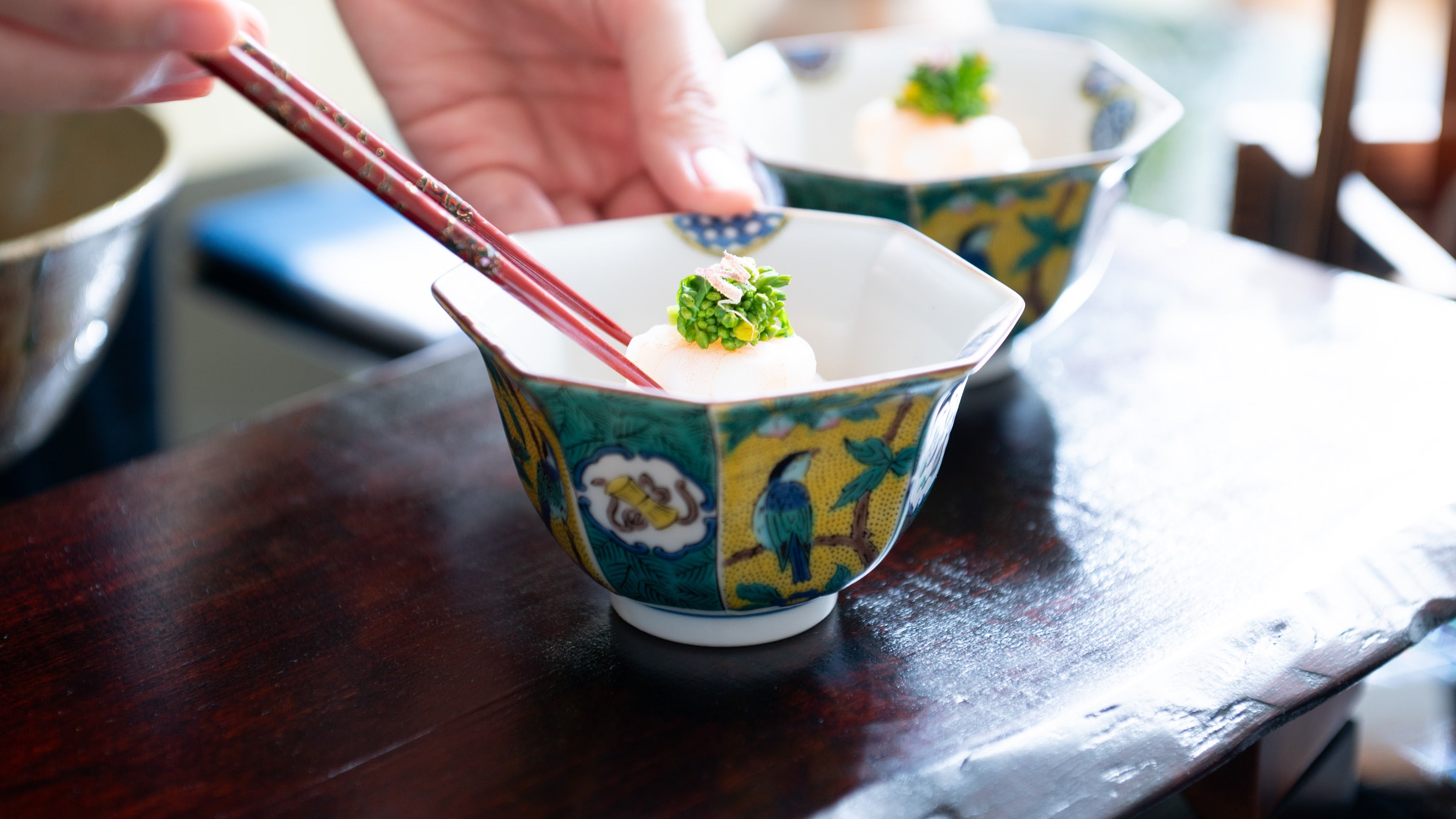
Possessing the Light, Edo Kiriko Glassware

A Breeze of Celadon: Table of Cool Delights
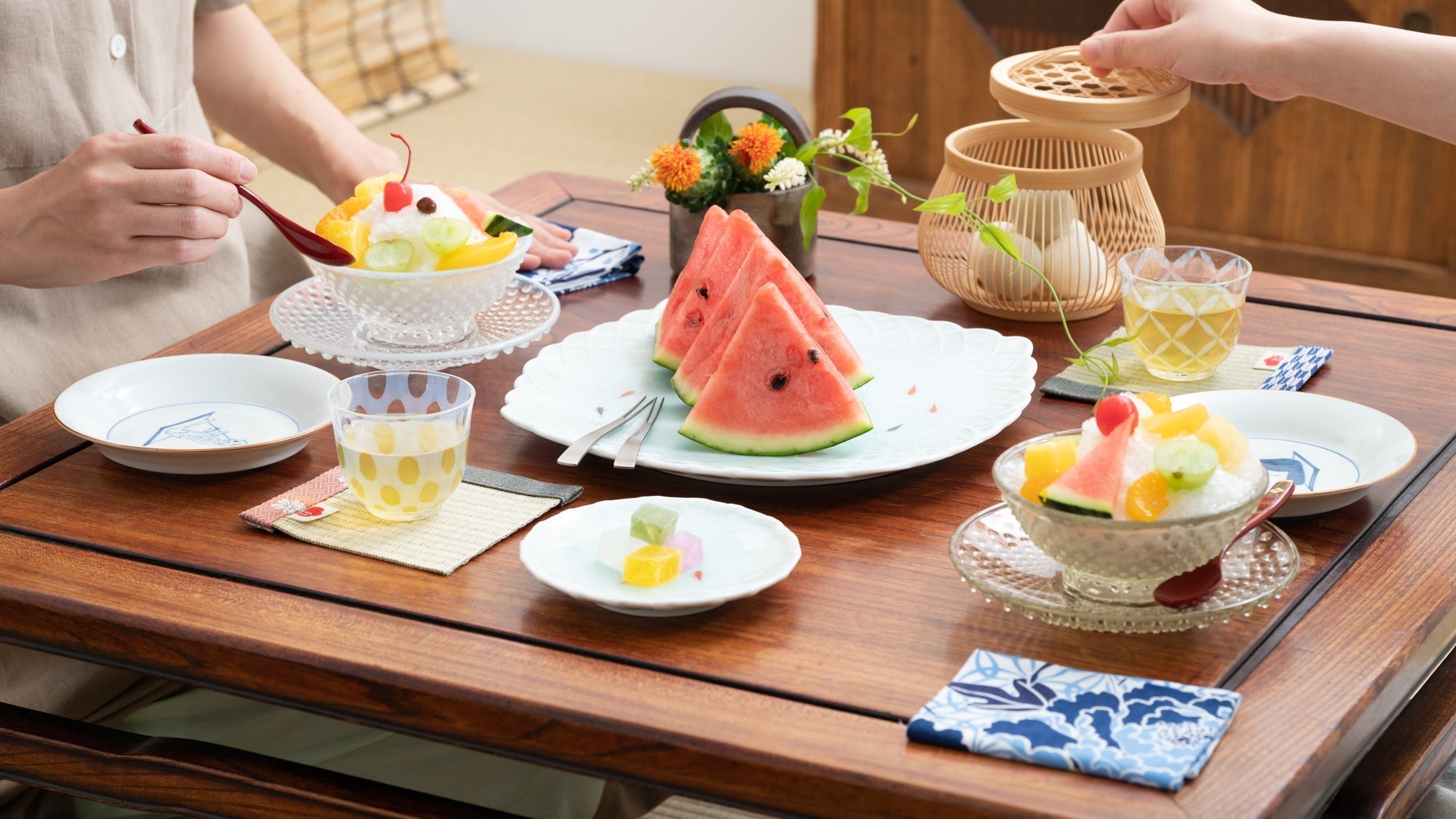
Summer Celebration with Celadon

International Shipping
Multiple shipping options available, with discounted shipping for orders over 500000 and free shipping over 5000000.
Insured shipping service
Full compensation for any accidental damage that may occur during transit.
Made by Japanese craftsmen
Fair prices plus free furoshiki wrapping with every order.

